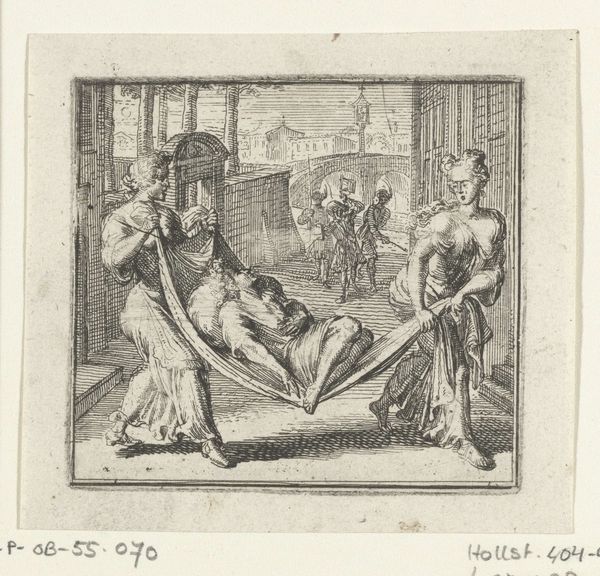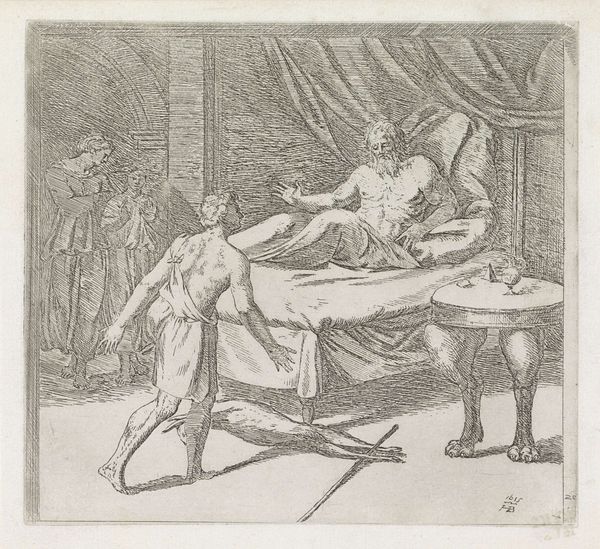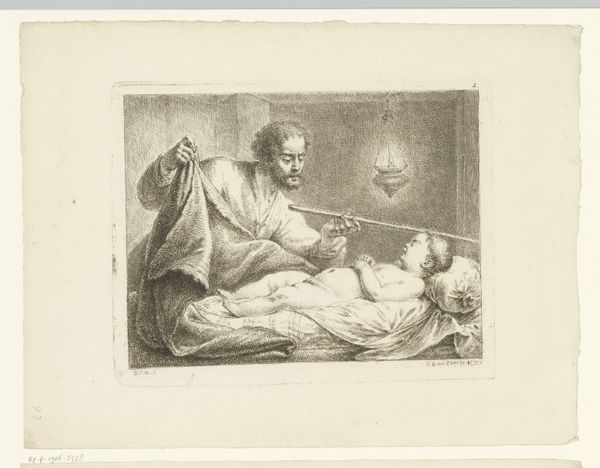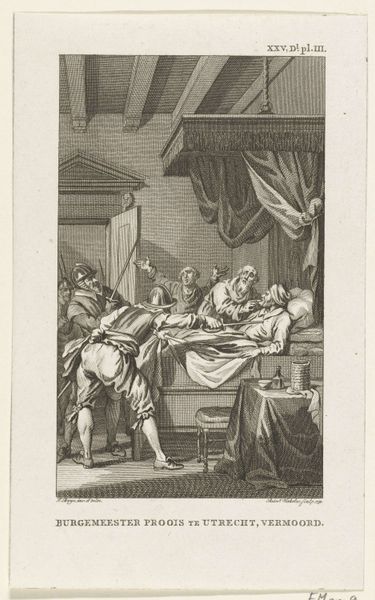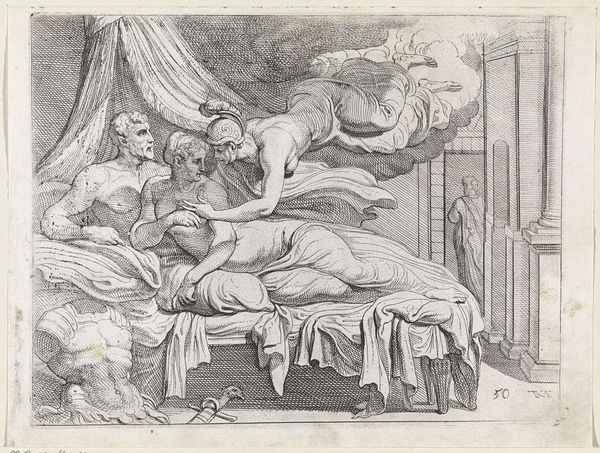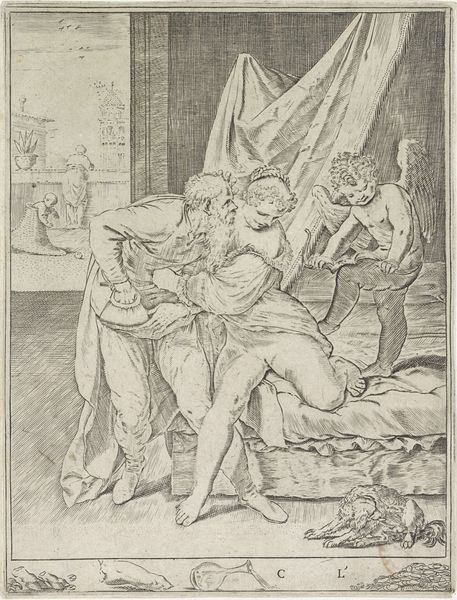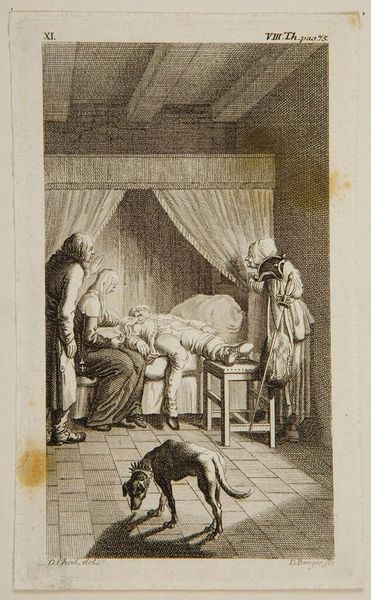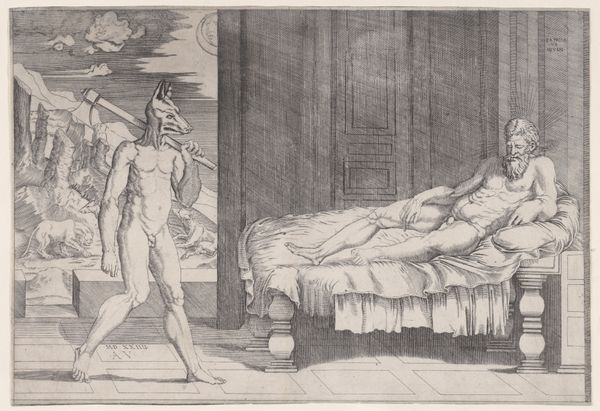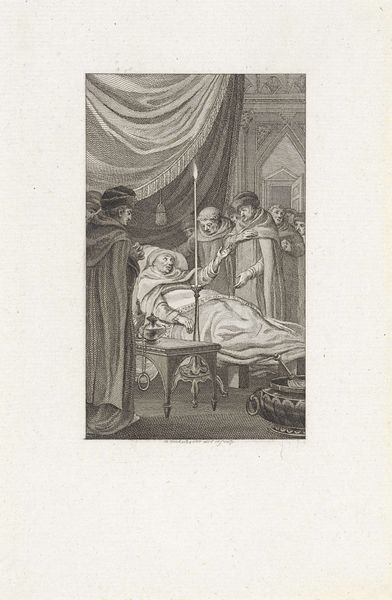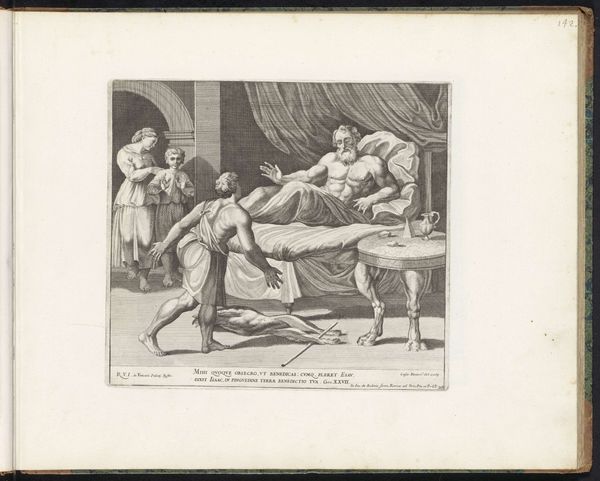
Dimensions: 239 × 173 mm (image); 271 × 193 mm (primary support); 433 × 297 mm (secondary support)
Copyright: Public Domain
Charles Rambert created this print, Plate Six from Misery, in 1851. Notice the stark contrast achieved through etching, a process that favors linear precision and tonal variation. The desolation of poverty, and the artist's technical skill, are immediately apparent. The composition is structured around the gaunt figure of a woman, likely a grandmother, holding a baby amidst a scene of domestic decay. Rambert uses line to create texture and depth, emphasizing the woman's emaciated form and the squalor of the environment. The sharp, angular lines convey a sense of harshness. In this context, the semiotic system is one of loss and abandonment: the discarded cradle, the flickering candle on the mantelpiece, and the rough texture of the woman's clothing. Each element contributes to a narrative of destitution. The work challenges conventional representations of motherhood. The formal qualities of Plate Six serve not only to depict a scene but to critique the social conditions that perpetuate such misery, engaging with broader philosophical questions about morality and social responsibility. This image prompts ongoing interpretation of poverty's causes and consequences.
Comments
No comments
Be the first to comment and join the conversation on the ultimate creative platform.

